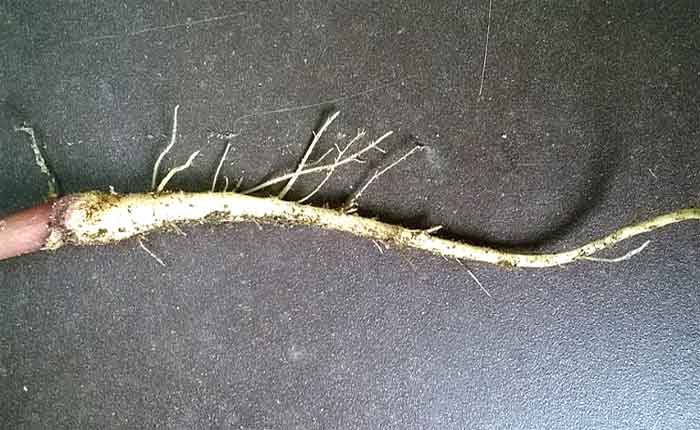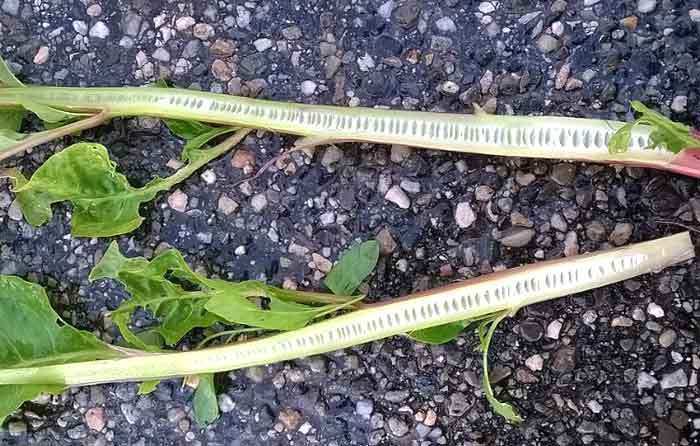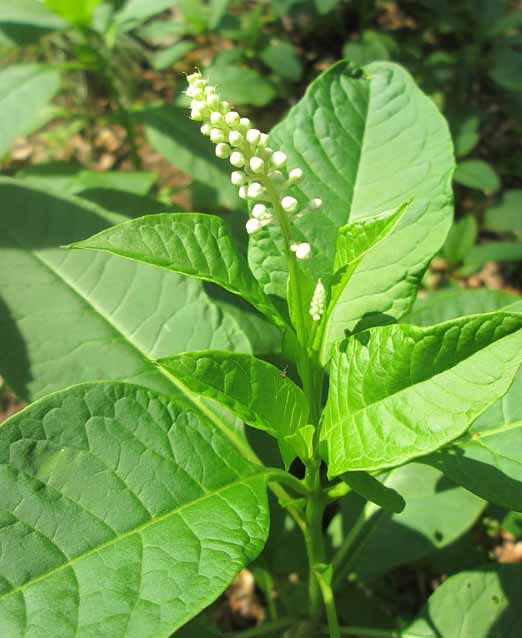Polkweed in herbal medicine

Polk (Phytolacca americana) berries are toxic to humans, but the dried root is used in herbal medicine and young leaves are cooked for food.
Polkweed has a long, white taproot, purple stems, and green leaves.
For medicinal purposes, use dried polk root only in very small doses. Never use fresh polkweed root. Even when dried, the root is considered a strong purgative and must be used with caution.
Never eat polk berries or mature leaves. They are poisonous.
There are only a few really dangerous herbs and polk is one of them. Overdose of polk can cause death.
Young polkweed leaves are safe when cooked.
Polk leaves, also called poke salad or poke sallet, can be cooked and eaten in early spring before flowers form. The young leaves are tender and nutritious at this stage.
Polkweed is also known as ink berry and dragon berry.
I never use polk in herbal medicine, preferring safer herbs. We do eat the young leaves occasionally, but I would rather have spinach!

Dried polk root stimulates the immunity.
Dried polk root is sometimes used as a lymphatic cleanser, but can cause vomiting. It is also used to reduce phlegm in the lungs.
Polk root is known to help heal inflammation and to stimulate the immune system. It is a mild analgesic and can be useful in the treatment of glandular fever, mumps, laryngitis, sore throat, and tonsillitis.
More uses for polk root
Dried polk root is used externally to treat skin parasites such as ringworm and scabies. It may also be applied to old wounds to reduce scarring.
A poultice of dried polk root can be applied to skin ulcers, hemorrhoids, and aching joints to relieve pain and reduce inflammation. Dried polk root poultices are also very helpful when treating mastitis.
Can dried polk root kill cancer cells?
Studies show that dried polk root may be useful in the treatment of certain cancers of the breast and uterus. Properties in dried polk root are thought to boost the immune system and may help reduce the size of tumors.
Polk contains several substances known as immunotoxins. These immunotoxins have been used in both mice and humans to eliminate tumor cells, autoimmune cells, and virus-infected cells. More research is needed since use can lead to tissue damage.
Please, do not try to treat cancer with polkweed!
Never use fresh polk root.
Old timers combined tincture of dried polk root with echinacea, indigo, or cleavers and used the mixture for treating rheumatism and gastric ulcers. Tinctures are always made from dried root (fresh polk root is toxic).
Read more about making your own tinctures and poultices here.

American Indians used dried polk root in natural healing.
American Indians used dried polk root to stimulate the heart, to ease arthritis, and to rid the body of parasites.
They called the herb “pocon” and considered it a valuable part of their healing rituals.
They also used the berries as a colorful dye.
Young polk leaves can be boiled and eaten as a green.
Young polk leaves are considered a “spring green” and are often eaten as a vegetable.
The leaves and sprouts are harvested when young and tender. They are boiled, drained, and boiled again.
Then they are sauteed with a little bacon grease (and maybe an egg is scrambled in for texture).
Some folks even slice the young stems, coat with flour or cornmeal, and fry them like okra.

Polk is a nutritional powerhouse.
Young leaves contain large amounts of protein, carbohydrates, iron, vitamin C, vitamin A, thiamin, riboflavin, and niacin. Never use polk as a vegetable once it begins to bloom.
Polk plants grow wild in meadows and fields.
Polk plants are common in the North Georgia area and are considered to be a weed by most people.
Polk can be found growing in damp fields, dry meadows, wooded areas, and along the highways.
The plant is tall with leafy branches. Clusters of dark purple berries appear during the summer and fall.
Dry polk root for use in herbal remedies.
Polk root is harvested during spring or late autumn. The roots are dug up, cleaned carefully, and then each root is split lengthwise before being dried for storage. Polk root must be dried for a month before using.
*Fresh mature polk plant, berries, and root are considered toxic (although young leaves and sprouts can be boiled and eaten as a green). Overdose may cause vomiting and purging, convulsions, and death.
Always consult with a healthcare professional before using any herbal remedy especially if pregnant, nursing, or taking other medicine.
Sources:
https://www.ncbi.nlm.nih.gov/pmc/articles/PMC4344624/
Blessings to you and yours!
Thanks so much for reading my blog. Jan.

*Note - the information on this website has not been evaluated by the Food and Drug Administration.
© 2005-2024 website design and content by Janice Boling